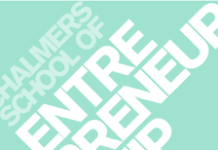Here are some slides from this week’s seminars. On Tuesday I presented a study I’ve done together with Framtidsfrön. The slides are in Swedish. Download them here: Presentation av resultat – förstudie Framtidsfrön 140520 – handouts On Thursday I held a full day workshop / seminar at ABF. The slides are in English. Download them here: Full day seminar in English – Göteborg – 140522 – handouts
Slides from biomimetics conference
Tomorrow I am speaker at a conference focusing on biomimetics and interdisciplinary innovation. Here are my slides (in Swedish) from that conference: Gränsöverskridande innovation – Biomimetik 140328 – handouts
Slides from Gothenburg and Sarpsborg
The last week I have presented my research on two occasions – in Gothenburg (GR Utbildning breakfast meeting) and in Sarpsborg (Norwegian conference on entrepreneurship in education). I promised to add my slides to this blog, and here they are: Presentation Sarpsborg 140226 – Handouts
Some differences between problem-based learning and entrepreneurial learning
I often hear the statement or question whether entrepreneurial education (or EL – entrepreneurial learning – as it is called in Sweden despite being in an educational setting) is the same as problem-based learning (PBL). I thought I’d put down some major differences that I see now based on my newly published dissertation on the topic of developing entrepreneurial competencies (read it here). The most straightforward way to put it is to say that PBL is “learning by solving problems” while EL is “learning by creating value”. Solving problems can be done without involving any external parties outside the educational setting or containing authentic content whatsoever, whereas value creation requires someone outside the education that the value is created for and then naturally also requires some degree of authenticity. This makes EL way more connected to the outside world than PBL has ever been designed to be. It also means that EL can spur much higher levels of motivation, experienced relevancy and engagement than can PBL. In my own classification of action-based pedagogies, PBL ends up in the first level – “creation pedagogy” – easy to deliver but not so effective in terms of deep learning and student motivation – while EL ends up in the other three categories, i.e. “value creation pedagogy”, “venture creation pedagogy” or “sustainable venture creation pedagogy” – more difficult to deliver but also more effective in terms of deep learning and student motivation. Read more about this in a separate blog post here.
There are probably more differences, please let me know what you think.
Sundsvall – Sweden’s most entrepreneurial municipality?
I would love to be able to say that my beloved hometown Gothenburg is the most entrepreneurial municipality in Sweden. But after having spent a day with the municipal chief director of Sundsvall – Stefan Söderlund – and his colleagues, I am inclined to say that Sundsvall might be quite a bit ahead of the crowd. Their clear emphasis on entrepreneurial societal development, supported by (1) a clear vision, by (2) an ambitious and cleverly designed project that they are about to give permanent funding as well as top management support, and not the least by (3) full political support, is something I have not seen elsewhere in Sweden before (do correct me if I’m wrong here anyone).
While we in Gothenburg are taking the unconstructive blame game and internal quarreling to new heights each year eagerly supported by watchdog journalists, Sundsvall are moving swiftly forward focusing on the search for new and innovative ways to improve public sector (including but far from “just” working with the educational sector), embracing the risk for failure and uncertainty that inevitably comes with it, seeing it as a price necessary to pay for achieving excellence. They have put up some really challenging and inspiring goals for the coming 7 years, and I think they might actually achieve what they have set out to achieve.
Tomorrow I will talk about how to make people more entrepreneurial in general, and it is on their “managers’ development day” – their 350 top managers. And they found me as a speaker (background checking me thoroughly through social media), no they hunted me down – they knew exactly what they were looking for in order to support their vision towards 2021 when they celebrate their 400:th year as a city – tools that make people more entrepreneurial. And that is exactly what we are working with at Chalmers School of Entrepreneurship. Still, it took me several months just to figure out why the heck they wanted me to speak, but as of now it’s crystal clear to me. I’m humbled and excited to see where they will take this!
Here are the slides I will discuss around tomorrow (in Swedish): Innovativt offentligt vardeskapande 140213
Teaching the teachers in entrepreneurial education
Last week I was the teacher for half a day in a course in “entrepreneurial learning” for school teachers in western Sweden. We discussed how people become entrepreneurial, what we can let students do when we let them practice “learning by doing”, what kinds of action based pedagogical approaches there are and how they affect motivation, why some things make people more entrepreneurial and also briefly how one can measure the process. I attach my slides from this session (in Swedish): EL genom vardeskapande.
Can emotional intensity levels better explain impact of entrepreneurial education?
The inconclusive results of all attempts made by researchers to determine the impact of entrepreneurial education has vexed me for long now. See examples compiled by Martin et al. here. One common test researchers do is to measure people’s intentions to become entrepreneurs before and after an educational intervention. See for example Souitaris et al. here. Yesterday a new thought came to my mind when finalizing an article for publication attempt. Perhaps the emotional intensity of any given educational intervention can explain a great deal of the effects education can have on people’s intentions to become entrepreneurs. When an extraneous variable is thought to impact the cause-effect mechanisms of any given system, researchers often “control for it”. That means that they keep it constant and see if the effects they are studying happen even if that specific variable is held constant. Common control variables include gender, ethnicity and age. But the emotional intensity of an entrepreneurial education program has to my knowledge never been controlled for here (perhaps in other domains). If emotional intensity of an educational intervention affects entrepreneurial intentions to a large extent, this could explain a good portion of the so far unexplained variance in this area. I’ve found an interesting example of when this is indeed the case, and that was an article by Huber et al. (here, p.20) where they controlled for students being part of a winning team. And they found that the students in winning teams got much stronger intentions to become entrepreneurs than others. So if researchers would start controlling for emotional intensity, or even put it as the main focus of what they study (i.e. make it the independent variable), we might start progressing again in the area of determining the impact of entrepreneurial education, which in my opinion has come to a disturbing standstill. My own research has uncovered three specific activities that lead to emotional intensity, and that is interaction with outside world, team work and uncertainty. But these kinds of activities are all too rare in education today. Read more about it in my dissertation here.
Are students the new oil of innovation systems?
Will students be regarded as a primary resource to rely heavily on in tomorrow’s national and regional innovation systems? Today they are rather regarded as “pittoresque”, being on a waiting list for becoming “real people” as Dewey would put it. This might change real soon.
Building strong national and regional systems of innovation has been a top priority for policymakers in many countries and regions for decades now, ever since the term “innovation system” was coined by Freeman and Lundvall in mid 1980s. Focus in discussions around innovation systems has for many years been on how new technology is transferred from researchers and inventors to the market and society by means of commercialization processes. In educational settings the role of the technology transfer offices and their hired commercialization professionals has been in focus, and the potential role of students in this process has been a non-topic and largely neglected.
A new trend in Sweden the last 1-2 years has however been to acknowledge the potential role students can play here. Sweden’s public innovation agency Vinnova has for example lately been looking into this with increasing interest, funding new projects. This newly dawned interest in the potential role young entrepreneurial people can play is in line with Daniel Isenberg’s statement that innovation without entrepreneurship is like a car without a driver – hard work, ambition and leadership will always trump brilliant ideas. The role of education is also increasingly acknowledged when it comes to developing skills for innovation, creativity and entrepreneurship, for example in Sweden’s new national strategy for innovation. A government report from 2011 states that if you want students as innovators and entrepreneurs, the most logical way to mobilize them is through their education.
All of this leads to a new important role for entrepreneurial education (i.e. for both enterprise and entrepreneurship education), and that is to supply the entrepreneurial minds that then will populate the national / regional innovation systems. In a recently accepted paper in the research journal Education+Training, me and my colleague Karen Williams-Middleton described how this can be achieved by letting venture creation programs bridge between entrepreneurial education and technology transfer, creating substantial value for society and powerful learning for the individual students. My colleague Mats Lundqvist has also shown in a recent article how entrepreneurial education can boost innovation through “surrogate” entrepreneurship (i.e. coupling innovations with “external” entrepreneurial capacity), leading to significantly better venture performance in terms of growth, turnover and profits.
Taking this thinking one step further, I would like to propose that we regard students as the new “oil” that makes innovation systems run more smoothly, increasing their output substantially. Wherever there is a need for entrepreneurial capacity, we can arrange courses and programs that let students take part in the creative processes of innovation, in an in-curricular manner – i.e. while they are still students and as formal part of the education. This is in sharp contrast to the norm today that entrepreneurial activities for students are almost 100% extra-curricular, i.e. they primarily attract students that were already entrepreneurial. (I have previously discussed the limitations of innovation systems relying solely on a self-selection principle, i.e. innovation systems expecting people to come to them).
This way we can let students become the lifeblood of our innovation systems, so that we not only get the already entrepreneurial people to use the innovation systems we invest so heavily in, but that we also bring more young people into these systems by exposing them to the entrepreneurial bug having proved to be so contagious and fun (see illustrative picture below). And action-based entrepreneurial education is a powerful way to accomplish such exposure, defined and classified in my recently printed dissertation.
An immediate objection would perhaps be that students are too young and inexperienced to do “real stuff”. I second that, having seen what our students are capable of doing at Chalmers School of Entrepreneurship. The problem is rather that we have never given students the chance to develop their skills and aptitudes for innovation and entrepreneurship in “real-life action” until they are no longer students, at which time they are often hired by established corporations for administering established activity.
NOTE: In 2012 a report issued by World Economic Forum stated that personal data is becoming a new economic asset class, touching all aspects of society. I allude on this, stating that students will become a new asset class in innovation, touching all aspects of innovation systems.
Slides from presenting my research in Rome, Malmö and Umeå
This month I have been around presenting my research on entrepreneurial education on a couple of occasions, summarizing the findings from my newly finalized dissertation (find it here). The topic has been “Making people (more) entrepreneurial”. A couple of weeks ago I was in Rome talking to and workshop:ing with organizations working with entrepreneurial development of youths around Europe. Last week I was in Malmö talking to people working with entrepreneurship in the Swedish schooling system. Tomorrow I will go to Umeå on a seminar with the entrepreneurship research faculty at Umeå University, School of Business. My slides at all of these three occations have been rather similar, with some slight differences and emphasis. Here are the slides I will use at the Umeå seminar: Making people entrepreneurial – Umeå 131113 – handouts compressed
Altruism in education: A paradox driving learning
In my newly finalized licentiat dissertation (find it here), one of the concepts I propose is that of an “altruistic paradox”, in that we get much more motivated by creating value for others today than by creating value for ourselves in a distant future (see p.35). Teachers often tell their students that “you will have use for this knowledge in (5-10-15) years from now, I promise!”. But if they instead would ask them to find one (1) person for whom the knowledge at stake is valuable today, this could boost learning significantly. We are billions of people on this planet, and if some knowledge cannot be put to use to any one of them as of today, why bother? Creating value to others is at the core of entrepreneurship, but is almost never asked of students. We somehow assume that students are of no use to society until they are “finished”.
As always, John Dewey has already explored this problem at length. He wrote already in 1916: “the future [has] no stimulating and directing power when severed from the possibilities of the present”, lamenting that we regard young people as merely on a “waiting list” to become “social members in full and regular standing”. It is easy to forget that young people can do great and valuable things. Alexander the Great was 14 years old when he took charges of the army of Macedonia, the same age Lorenzo de Medici had when he left Florence to negotiate a loan worth billions today.
I propose that we include more activities in educational settings where young people are challenged to find the answer to a simple question: “for whom is this knowledge valuable today?”. I have labeled this approach as the “actionable knowledge” approach in my licentiate thesis. Read more on page 35 here. Comments?




